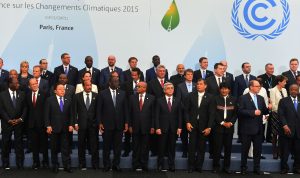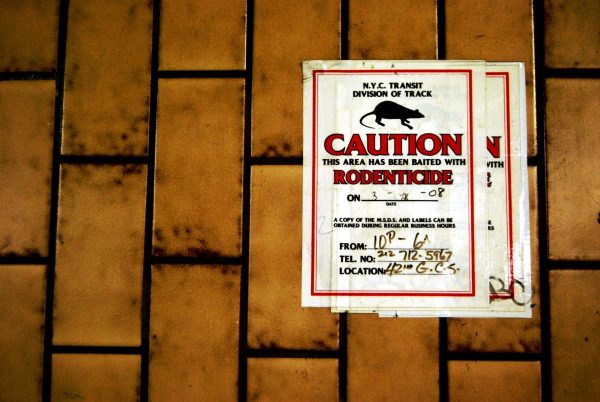Amid political controversy, a forgotten casualty: Earth
Google image/Creative Commons license
A battle for the environment is being overshadowed by other issues in Donald Trump’s White House.
In the midst of great controversy over immigration policies, health care replacement plans, and conflict in the Middle East, a key White House issue has been lost amid larger headlines. President Donald Trump’s policies concerning environmental regulations have received scant attention, when they are of increasing importance to the country’s (and the world’s) future.
Since the start of his term in January, Mr. Trump has issued several executive orders concerning environmental regulations put in place by former President Obama. The first one, which he signed on Jan. 24, a mere four days after his inauguration, advanced the construction of the highly controversial Keystone XL Pipeline.
The construction of this pipeline was rejected by Mr. Obama, on the grounds that it would do environmental harm. Mr. Obama also feared that the pipeline’s advancement would undermine America’s leadership in propagating sustainable energy.
The environmental consequences of construction could be devastating. A study into the potential impact was commissioned by the State Department, with preliminary findings released in January of 2014.
Among an extensive list of “side effects” were the likelihood of stream sedimentation and hazardous material spills. Both of these could be catastrophic for the pipeline’s surrounding environment, including contamination of streams used for drinking water.
This seems to have had little effect on Mr. Trump and his team, however. After famously declaring that “the concept of global warming was created by and for the Chinese,” Mr. Trump decided that Mr. Obama’s environmental policies and his reasons for shutting down the pipeline project are detrimental to the American economy.
Environmentalists and activists, after fighting for seven years against the pipeline’s construction before Mr. Obama put a halt to it, are prepared to continue fighting.
“The fight will be very real, and very intense,” said Bill McKibben, co-founder of the environmental advocacy group 350.org. “There are millions and millions of Americans who are committed to ensuring the Keystone Pipeline never gets built.”
The Trump administration did not stop at the Keystone project, however. On Feb. 16, Mr. Trump signed an order that would repeal the Stream Protection Rule, a late Obama administration initiative intended to protect America’s waterways from the wastes and dangers of surface mining.
The rule would have required coal miners to restore mining areas to their original ecological state and carefully monitor environmental changes following mining.
Perhaps unsurprisingly, it was met with much resistance from big oil and coal companies. Mr. Trump himself called the regulation “another terrible job-killing rule.”
Most analyses state that it would minimally affect jobs– and there are little more than 150,000 full-time coal mining jobs remaining in the United States.
“The outdoor economy supplies 6.1 million direct jobs in the United States. When you don’t regulate the [mining] industry and make sure they are cleaning up their mess, you are hurting the 6.1 million jobs that depend on having clean streams,” said Sen. Maria Cantwell (D-Wash.), who serves on the Senate Energy and Natural Resources Committee. “The outdoor economy is just as important, and is actually producing more jobs and is producing more revenue.”
Some analysts have argued that the repeal actually hurts more jobs than the implementation, a point that effectively shuts down Mr. Trump’s rationale.
Perhaps of bigger concern is Mr. Trump’s approach to the environment on the whole. During his presidential campaign, Mr. Trump announced his intention to withdraw the United States from the Paris Agreement, a goal that could be disastrous for the global effort to thwart climate change.
At the United Nations Climate Change Conference (COP21), which took place in December of 2015, 195 countries created the first legally binding climate change accord. The agreement focused on lowering global warming to below two degrees Celsius, and 1.5 if possible.
Every country in attendance (179 plus the European Union) pledged to lower their carbon emissions and peak them somewhere in the near future. The United States promised to reduce emissions by 26-28 percent below 2005 levels by the year 2025.
For the agreement to take effect, 55 countries were required to sign it, and in all they would have to be responsible for 55 percent of the world’s pollution. It went into effect last November.
Mr. Trump, however, announced that he intended to cancel the Paris deal, calling it a method for “foreign bureaucrats [to] control how much energy we use.”
But it isn’t as simple as just snapping your fingers and withdrawing.
Once intent of withdrawal is announced, the act itself takes a minimum of three years to complete. If Mr. Trump truly intends to withdraw, it will take him almost his entire term to do so.
He can, however, severely limit action that has already been taken to uphold America’s pledge. It is within the president’s authority to freeze, or delay, the policies created by the Obama administration to sustain the agreement.
The Clean Power Plan is one such policy, as is the funding that the United States sends to other countries to help combat climate change.
Already, Mr. Trump has tasked the Environmental Protection Agency to review the Clean Power Plan, and perhaps replace it with something more “job-friendly.”

President Trump has threatened to pull the United States out of a historic climate change agreement reached in Paris.
In doing so, the president is effectively abdicating America’s position as a world leader in climate change action.
“The United States not only recognizes its role in creating this problem, we embrace our responsibility to do something about it,” Mr. Obama said during the opening talks of the Paris conference.
Mr. Trump appears more focused on political spin, in particular invoking the idea of “jobs” in opposing environmental regulations. The environment, apparently, will have to take care of itself.
But the controversy doesn’t end with the Keystone pipeline or the Paris Agreement. As Mr. Trump made his choices for Cabinet positions, everyone watched closely for the one position that would reveal the president’s hand regarding the environment: the administrator for the EPA.
When he announced his nominee to be Scott Pruitt, at the time Oklahoma’s attorney general, no clearer indication could be given regarding his stance.
Mr. Pruitt, who is self-described as “a leading advocate against the EPA’s activist agenda,” has sued the agency 13 times over the years, argued for its dissolution, and has rejected climate change as a scientifically proven concept.
“Pruitt has a clear record of hostility to the EPA’s mission,” said Ken Kimmell, president of the Union of Concerned Scientists, an organization which combines science in advocacy in pushing for climate action.
In selecting a climate-change denier as the head of the most important climate agency in the country, Mr. Trump has taken a large step in reversing Mr. Obama’s legacy, and dismantling climate change’s status as a dire issue which affects not only this country, but the world.
Mr. Pruitt is not the only one. Many other officials new to the EPA, especially the transition team, headed by Myron Ebell, have been known to oppose climate change as well.
“The environmental movement is, in my view, the greatest threat to freedom and prosperity in the modern world,” Mr. Ebell said, adding that he fully expects Mr. Trump to uphold his promise and withdraw from the Paris accord.
Gina McCarthy, former head of the EPA, has voiced her concerns with the Trump administration’s stance. She declared in an interview that none of the members of the transition team were scientists, a fact that is alarming on its face.
“The implication that political people would have to review the science before it was articulated is disturbing,” Ms. McCarthy was quoted as saying in The Boston Globe. “If the science changes because of politics, that’s not science.”
It would seem that science should be outside the realm of politics, but that is not always the case.
So what does it all mean for America?
“If we start to consider [this] the new normal, that’s a pretty scary thought,” said Dr. Michael Clarage, AMSA’s first-year sustainability teacher. “It could mean that the next generation will grow up thinking that these things don’t matter.”
And if government leaders continue to downplay the importance of education and action on the topic, America may well be on a road to the past, not the future, and it could lead to disaster.

Kate is a junior. She loves writing and has done lots of it, especially short stories
and poetry in both Russian and English. She looks up to many...






